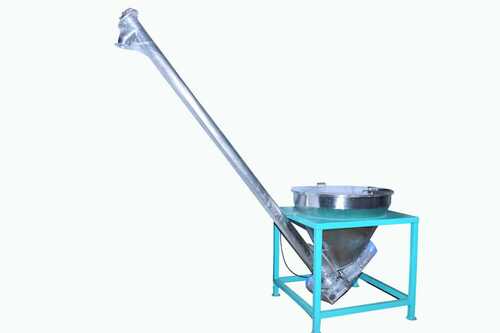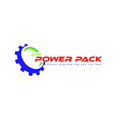
Screw Conveyor Machine
160000 INR/Piece
Product Details:
- Usage Industrial
- Material Mild Steel
- Type Screw Conveyor
- Resistant Feature Oil Resistant
- Warranty 1 Year
- Click to view more
X
Screw Conveyor Machine Price And Quantity
- 1 Piece
- 160000 INR/Piece
Screw Conveyor Machine Product Specifications
- Screw Conveyor
- Industrial
- Oil Resistant
- Mild Steel
- 1 Year
Product Description
A screw conveyor machine is a mechanical conveying system that uses a rotating helical screw blade, usually within a tube, to move liquid or granular materials. It is a versatile and efficient method of handling bulk materials, and its widely used in various industries for conveying products such as grains, cement, coal, and other bulk materials.
Here are some key components and features of a screw conveyor machine:
1. Screw or Auger: The helical screw blade is the central component of the conveyor. It is responsible for moving the material along the conveyor. The screw can have different designs, such as variable pitch or ribbon flighting, depending on the specific requirements of the material being conveyed.
2. Tube or Trough: The screw is enclosed within a tube or trough, which contains and guides the material being conveyed. The tube can be made of various materials, including steel, stainless steel, or plastic, depending on the application and the nature of the material.
3. Drive System: A motor and drive system are used to power the screw and move the material along the conveyor. The drive system can be located at one end of the conveyor or at both ends, depending on the design and application.
4. Inlet and Outlet: The screw conveyor typically has an inlet for material to enter and an outlet for material to exit. The design of these openings can vary depending on the specific requirements of the material and the application.
5. Hanger Bearings: Hanger bearings are used to support the screw at intervals along its length. They help reduce friction and ensure smooth operation.
6. Seals and Covers: Screw conveyors may include seals and covers to contain the material being conveyed and to prevent contamination or spillage.
Applications of Screw Conveyor:
1. Agriculture: Screw conveyors are used for transporting grains, seeds, and other agricultural products. They are often employed in grain elevators, feed mills, and other agricultural processing facilities.
2. Food Processing: In the food industry, screw conveyors are utilized for handling and transporting bulk food materials such as flour, sugar, spices, and other ingredients. They are designed to meet hygiene and sanitation standards.
3. Mining and Minerals: Screw conveyors are employed in the mining industry for conveying ores, coal, and other minerals. They can be used to transport materials from one processing stage to another or to load/unload materials from trucks or railcars.
4. Chemical Industry: Screw conveyors are used in the chemical industry to handle various bulk materials, including powders, granules, and chemicals. They can be employed in processes such as mixing, batching, and conveying raw materials.
5. Construction: In construction sites, screw conveyors are used for conveying cement, sand, and other construction materials. They are often part of concrete batching and mixing systems.
6. Waste Water Treatment: Screw conveyors play a role in transporting and dewatering sludge in wastewater treatment plants. They are used to move the sludge from one process to another and can also be involved in the drying process.
7. Recycling Facilities: Screw conveyors are used in recycling facilities to transport and process various recyclable materials, such as plastic, paper, and metal.
8. Chemical Processing: In chemical processing plants, screw conveyors are employed for conveying bulk chemicals and raw materials. They can be used in various stages of the production process.
9. Power Plants: Screw conveyors are utilized in power plants for handling and transporting coal and other bulk materials. They are often used to feed fuel into boilers.
10. Cement Industry: Screw conveyors are extensively used in the cement industry for transporting cement, clinker, and other materials in the production process.
11. Plastics Industry: Screw conveyors play a role in conveying plastic pellets and powders in the plastics manufacturing process.
12. Wood Processing: In the wood industry, screw conveyors are used for transporting wood chips, sawdust, and other materials in various stages of wood processing.
Advantages of Screw Conveyor:
1. Versatility: Screw conveyors can handle a wide range of materials, from powders to granular and even semi-solid materials. They are suitable for transporting materials with various particle sizes and consistencies.
2. Simple Design and Construction: Screw conveyors have a straightforward design, consisting of a helical screw blade rotating within a tube or trough. This simplicity makes them easy to install, operate, and maintain.
3. Cost-Effective: The simplicity of design and construction often translates into lower initial and operational costs compared to other types of conveyors. They are a cost-effective solution for bulk material handling.
4. Compact Design: Screw conveyors can be designed to fit into tight spaces, making them suitable for installations where space is limited. This compact design allows for more flexible and efficient layout configurations.
5. Efficient Material Handling: The helical screw design effectively moves materials along the conveyor, promoting a steady and controlled flow. This efficiency is especially useful for handling bulk materials over short to medium distances.
6. Customization: Screw conveyors can be easily customized to suit specific material handling requirements. Factors such as screw diameter, pitch, and speed can be adjusted to optimize performance for different materials and applications.
7. Flexible Routing: Screw conveyors can be routed horizontally, vertically, or at various inclinations to accommodate the layout of the facility and the specific material flow requirements.
8. Easy Maintenance: Maintenance requirements are generally minimal, and routine inspections can ensure continued reliable operation. Components such as hanger bearings and seals can be easily accessed and replaced when needed.
9. Enclosed Design: The tube or trough design of screw conveyors can be enclosed, preventing dust or other environmental contaminants from escaping. This feature is particularly important in industries with strict hygiene or environmental standards.
10. Continuous Operation: Screw conveyors can operate continuously, providing a steady flow of materials. This continuous operation is beneficial for maintaining efficient production processes.
11. Gentle Material Handling: The design of the screw conveyor allows for gentle handling of materials, reducing the risk of degradation or damage to the conveyed product. This is crucial for materials that are sensitive to rough handling.
12. Adaptable to Harsh Environments: Screw conveyors can be constructed using materials that resist corrosion, wear, and abrasion, making them suitable for operation in harsh or corrosive environments.
FAQ of Screw Conveyor:
Q. What is a screw conveyor?
Ans: A screw conveyor is a mechanical conveying system that uses a rotating helical screw blade within a tube or trough to move materials. It is commonly used for transporting bulk materials in various industries.
Q. What types of materials can be conveyed by a screw conveyor?
Ans: Screw conveyors can handle a wide range of materials, including powders, granules, flakes, pellets, and semi-solid materials. Common examples include grains, cement, coal, food products, and chemicals.
Q. What are the main components of a screw conveyor?
Ans: The main components include the screw (or auger), the tube or trough, a drive system, hanger bearings, inlet and outlet, and optional features like seals and covers.
Q. What are the advantages of using a screw conveyor?
Ans: Advantages include versatility, simple design and construction, cost-effectiveness, compact design, efficient material handling, customization, flexible routing, easy maintenance, enclosed design, continuous operation, gentle material handling, and adaptability to harsh environments.
Q. What industries commonly use screw conveyors?
Ans: Screw conveyors are used in a wide range of industries, including agriculture, food processing, mining, construction, wastewater treatment, chemical processing, power plants, cement production, plastics manufacturing, and wood processing.
Q. How are screw conveyors powered?
Ans: Screw conveyors are typically powered by electric motors. The motor provides the necessary torque to rotate the screw, moving the material along the conveyor.
Q. Can screw conveyors be inclined or vertical?
Ans: Yes, screw conveyors can be designed to operate horizontally, inclined, or vertically. The design depends on the specific requirements of the material and the layout of the facility.
Q. How is the capacity of a screw conveyor determined?
Ans: The capacity of a screw conveyor is determined by factors such as the size and pitch of the screw, the rotational speed, the diameter of the conveyor tube, and the characteristics of the material being conveyed.
Q. Are screw conveyors easy to maintain?
Ans: Yes, screw conveyors are generally easy to maintain. Regular inspections and routine maintenance can help ensure reliable operation. Components such as hanger bearings and seals can be accessed and replaced as needed.
Q. Can screw conveyors handle abrasive materials?
Ans: Yes, screw conveyors can be designed with materials and features that resist abrasion, making them suitable for handling abrasive materials.
Q. What safety considerations should be taken into account when using screw conveyors?
Ans: Safety considerations include proper guarding to prevent access to moving parts, emergency stops, proper training for operators, and adherence to safety standards and regulations.
FAQs of Screw Conveyor Machine:
Q: What is the drive type of the Screw Conveyor Machine?
A: The drive type of the Screw Conveyor Machine is electric.Q: What is the type of the Screw Conveyor Machine?
A: The type of the Screw Conveyor Machine is Screw Conveyor.Q: Does the Screw Conveyor Machine have a computerized control system?
A: No, the Screw Conveyor Machine does not have a computerized control system.Q: What is the automatic grade of the Screw Conveyor Machine?
A: The automatic grade of the Screw Conveyor Machine is semi-automatic.Tell us about your requirement

Price:
Quantity
Select Unit
- 50
- 100
- 200
- 250
- 500
- 1000+
Additional detail
Mobile number
Email




 Send Inquiry
Send Inquiry Send SMS
Send SMS Call Me Free
Call Me Free English
English Spanish
Spanish French
French German
German Italian
Italian Chinese (Simplified)
Chinese (Simplified) Japanese
Japanese Korean
Korean Arabic
Arabic Portuguese
Portuguese